How much to pump the wheels in winter. How to check tire pressure. Temperature mode of operation
In winter, it should be checked at least once every two weeks, as well as in case of a sharp change in air temperature. The manufacturer of the car indicates in the operating recommendation what tire pressure this car should have in winter. A correctly inflated tire optimizes fuel consumption and contributes to safe driving. It would seem that small deviations from normal values can lead to such consequences as uneven tread wear, and, accordingly, to a reduction in tire life in the future.
It should be remembered that when low temperatures tire pressure also drops. For example, if the tire pressure is 2 bar at a temperature of +20 degrees C, then at 0 degrees C this value will drop to 1.8 bar. Thus, if the tire inflation process occurs at low temperature values environment, the pressure standards specified by the manufacturer must be observed. At the same time, when inflating tires in warm rooms, it is necessary to increase the pressure in the car's winter tires by an average of 0.2 bar. In this way, it is possible to compensate for differences due to low temperatures.
It is not necessary to install winter tires only on the axle that is the drive one. Many motorists, in an effort to improve the traction properties of their car, make a similar mistake. Despite the seemingly reasonableness of such a decision, such an option for installing winter tires is not able to provide optimal grip properties of wheels with the road in winter.
In turn, there are certain subtleties in the question: “What should the tire pressure be in winter?” Based on logical conclusions, we can draw a definite conclusion that if low-profile tires are installed on a car, it is recommended to pump them over a little so as not to make a “bump” on the wheels. Also, due to a small pumping of the wheel, the grip characteristics of tires with icy conditions increase significantly. roadway, thereby improving the dynamic properties of the car.
If soft tires are installed, it is very important to ensure that the tire pressure is not too low in winter. The low pressure coefficient for such rubber contributes to the rapid transformation of them into "rags". It also creates a fairly high percentage of the likelihood that the wheels will burst on the road. It should be remembered that by pumping the wheels, you increase the load on the car's suspension.
In winter, tire pressure should be checked on average once a month. so that the measurement accuracy is not affected various factors, you should wait until the tire becomes cold. When driving, the degree of pressure can increase up to 20%, on this basis, all measurements are advised to be made after at least two hours after the end of the trip.
There is a widespread opinion: "On a slippery roadway, you need wheels in order to increase the grip of the tires." This statement is fundamentally wrong due to a decrease in the specific pressure on the road surface, due to an increase in the area of the contact patch with the road, the grip characteristics of tires on a slippery road deteriorate by an order of magnitude. Another reason not to reduce tire pressure is possible risk when hitting any unevenness, damage the rims due to insufficient elasticity of the tire itself.
Tire pressure can be measured using a special device - a pressure gauge. This device it is better to purchase together with the pump. In general, it is necessary to make sure that the tires in your car are moderately inflated, especially in cold period year, because it is this that will provide optimal grip and a smooth ride.
And the interior of the car. Today I will take up a more serious topic. A topic that directly affects traffic safety. In addition to traffic safety, the subject of our further discussion depends on the smoothness of the ride and the load on the suspension elements, and subsequently, respectively, their durability.
What is so important, you might think? These are car tires, and more precisely, the article will answer the question: what should be the pressure in the tires of a car?
I don’t know, unfortunately, or fortunately, but modern new cars basically do not cause trouble to owners. And drivers get the impression that there are no checks between scheduled technical services should not be. After all, the car is new, what will it be ... On the one hand, vehicles are really reliable. On the other hand, no one is immune from troubles along the way.
In my opinion, no matter how reliable a car is, sometimes it is necessary to be interested in its health (check technical condition), especially the traffic rules, clearly instruct the driver to check before leaving, and on the way to ensure the correct technical condition of the vehicle.
That is, before each trip, conduct a small check, which will take you no more than 10 seconds. What we check:
- whether there are smudges of working fluids. Spots under the car will clearly testify to this;
- operation of external lighting devices. Not every car has a sensor that notifies that one or another lamp has burned out;
- tire pressure. This must be done at least visually, bypassing the "iron horse" and seeing if one of the wheels is flat. It is much better to control the pressure with a pressure gauge;
The air pressure in the tire - the individual number depends mainly on:
- type of vehicle, but mainly on its curb and gross weight;
- axle weight distribution. For a car with a driver and a passenger on board, the values \u200b\u200bcan be one, but for a fully loaded one, with 5 riders, completely different. Of course, this is more typical for wheels. rear axle;
- tire sizes and rim on which it is mounted (height and width of the profile).
On the same car, but with tires of different sizes and different loads, the air pressure inside will be different.
The recommended data on inflating wheels must be obtained not from a garage neighbor who pumps wheels up to 2 atmospheres all his life and not on the Internet, where information is far from always reliable, but in the instruction manual for your car or on stickers, which is often posted on driver's side center pillar or fuel filler flap.
Not docking!?
There is one interesting nuance. The pressure recommended in the tire is indicated by the car manufacturer, for rubber of a specific dimension installed on the car. But the tires installed on this car can be various manufacturers. It can be soft and comfortable, high-quality Continental tires, don't take it as an advertisement, it's my personal opinion that these tires are one of the best, and if you take the price-quality ratio, then the best. And there may be oak, inexpensive and of appropriate quality, Russian Kama tires. Each manufacturer of automotive rubber also has a recommended pressure for each size, respectively, which is not taken into account by the automaker.
Each of the parties in this case, both the automaker and the rubber manufacturer, indicates the recommended pressure, taking into account their interests.
The car manufacturer indicates a recommended value less than the rubber manufacturer. Why ask you? As you know, on tires with less pressure, the car goes softer, the tires dampen and absorb bumps, removing some of the load from the suspension and other elements of the car. This is beneficial for the car manufacturer, because its product is perceived as more comfortable and the service life of the chassis components and assemblies increases. And increased tire wear or, even worse, breakdowns and hernias are of little concern to him, because he does not produce rubber and, for example, ford, has no idea why the Nokian rubber installed on cars wears out so quickly, because rubber is written Nokian, not Ford. 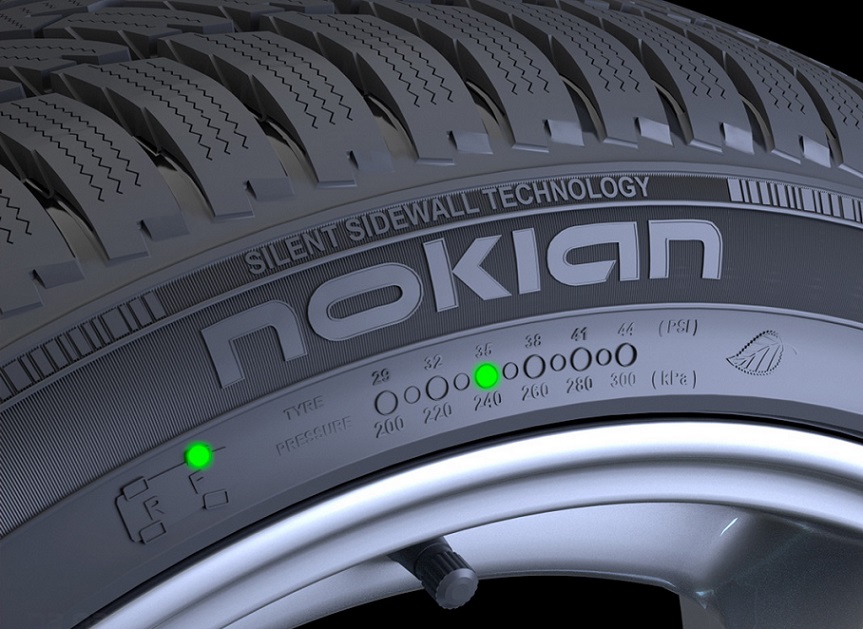
On the contrary, it is more profitable for a rubber manufacturer to indicate the recommended value slightly higher. In this case:
- less tire wear
- the probability of getting damaged, for example, I ship also less.
Everyone is pursuing their own benefit. How can we be ordinary motorists?
It is necessary to strictly observe the standards indicated by the manufacturer in the table located on the central pillar or printed in the instruction manual.
Pressure below normal
Rules are there to be followed. What will happen when the tire pressure is below normal, that is, with a flat tire:
- The contact patch of the wheel with the road will increase, which will immediately affect fuel consumption, it will increase, you can learn more about this in.
- As the sidewall of the tire becomes softer, the driver will feel that the car is less controlled and does not obey the steering wheel as accurately.
- Increased wear of the tread tread at the edges, that is, the rubber resource is reduced.
- Increasing the possibility of damage when hitting an obstacle, falling into a pit, etc. All this will be the result of a softer, with insufficient pressure, sidewall.

Pressure above normal
Too much high pressure- also not good. What troubles can lie in wait for the driver and his car or truck:
- The contact patch of the wheel with the road decreases, which will negatively affect the braking distance, its length will increase.
- The second follows from the first. The contact patch is reduced and it will be located exactly in the middle of the treadmill. Hence, again, uneven wear of rubber.
- Driving a car will become less comfortable, because overinflated tires are very hard and they are not able to smooth out the bumps in the road, they betray them further on the vehicle body and passengers, respectively.
Air pressure versus temperature
If you remember school curriculum, and in particular physics, then we get the following dependence:
when the temperature increases and the volume is constant, the pressure increases, and vice versa, when the temperature decreases, the pressure will decrease.
Why am I writing this. A tire inflated to 2 atmospheres in summer, at an ambient temperature of +20, when the temperature drops to -10 in winter, it will lower it to 1.8 atm. This does not mean at all that it lets you down - these are the laws of physics.
And yet, after a long movement, do not rush to immediately check the air pressure. This is because the tire gets hot. The air inside it also heats up, and the pressure rises accordingly. Such an increase during active driving can reach 0.5 - 0.8 atm.
I think that with this article I answered many of your questions regarding wheel inflation. If suddenly you did not see the answer to your question in the article, I will be glad to answer it in the comments. On this we will say goodbye. Till!
November 22, 2016Many factors depend on how inflated the wheels are - the handling of the car and the braking distance, as well as the speed of wear of the suspension and the tires themselves. To find a compromise between them, it is necessary to maintain optimal pressure in the tires of the car. Moreover, its value varies depending on the model of car, weather conditions and the type of roads on which you have to travel during operation. Therefore, every motorist should know to what extent the slopes of his “iron horse” need to be pumped up.
- good grip is achieved due to the optimal area of the contact patch of the tread with pavement;
- the abrasion of the slopes occurs evenly over the entire working surface;
- the car is easy to control and does not consume excess fuel;
- suspension parts do not wear out ahead of time.
To find out how many pressure units should be in tires at different conditions operating the car, you need to find the manufacturer's recommendations in the form of a plate, which is usually placed in such places:
- in the instruction manual;
- in the form of a sticker on the fuel tank cap;
- nameplate or sticker in the driver's door opening, usually located on the threshold or on the side pillar.
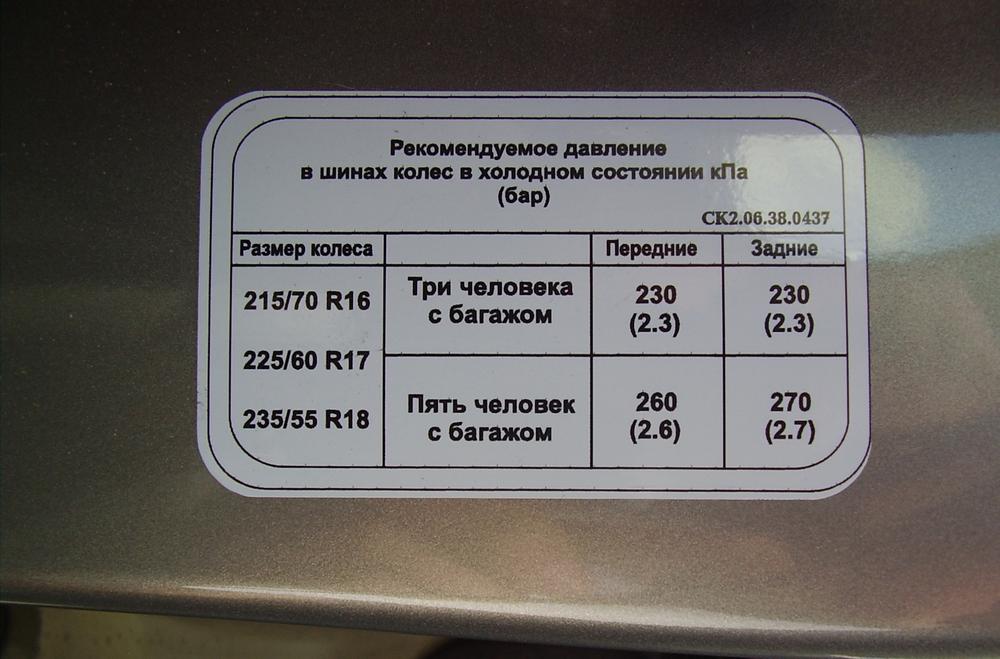
For continuous operation, the pressure value must be checked at least once a week.. To do this, be sure to purchase a car pressure gauge (if it is not included in the car kit). To pump the wheels, a hand or foot pump is used, a more “advanced” version is a mini-compressor operating from the on-board power supply. As a rule, these devices are equipped with their own pressure gauge, which allows you to control the pressure during the inflation process.
A little confusion may arise over the question of how the pressure inside the tires of a car is measured. The fact is that the units of measurement indicated in foreign-made cars may differ from the generally accepted values in the countries of the post-Soviet space. Most of "our" pressure gauges are calibrated in kgf / cm 2, MPa or atmospheres (Atm), and on plates in foreign cars you can find other units - Bar or psi. The ratio between them is:
- 1 kgf / cm 2 \u003d 1 MPa \u003d 1 Atm;
- 1 atm = 14.7 psi = 1.01 bar;
- 1 psi = 0.07 atm;
- 1 Bar = 0.99 Atm.
Problems with under-inflated tires
If the pressure in the tires is reduced by 15-25% of the optimum, which is indicated by the manufacturer on the plate, then the contact patch with the roadway increases. From constant driving on weakened slopes, the following consequences occur:
- Due to the deflection of the middle part of the tread, wear occurs more at the edges of the tire. This uneven wear shortens the life of the tires.
- The car loses control on hard and even surfaces.
- The sagging side parts heat up more, which also leads to accelerated wheel wear.
- On low-profile tires, side "bumps" are formed from impacts on the tread.
- Fuel consumption increases, although in practice this becomes noticeable only after comparative measurements.
If the rubber is lowered by 30-50%, then along with the tread, the edges of the sidewalls begin to touch, and they are not at all intended for such use. Their warming up increases, causing the tires to explode at the slightest cut. That is why driving on flat tires is unacceptable.

Slightly "relaxed" ramps provide small benefits that can be used from time to time:
- fewer shocks are transmitted to the suspension and it lasts longer, which is important when driving on bad roads;
- the car behaves more stable in icy conditions and it is easier to get out of a snowdrift;
- a larger contact patch allows you to overcome a dirt road, slightly washed out by rain.
Constantly deflate wheels to drive in difficult conditions Not recommended. In this situation, it is better to buy special rubber with spikes (for ice) or with an increased tread (for off-road).
Overinflated wheels are also bad
Unlike the previous case, over-inflating tires does not provide any benefits and only causes negative consequences:
- The area of the contact patch decreases due to the bulge of the tread, which leads to a deterioration in grip with the roadway.
- The stability and controllability of the car on any surface is reduced.
- Tread wear is uneven, the rubber wears more in the middle than at the edges. The higher the pressure, the faster the middle part will be erased to the very cord, although the tread will still remain on the sides.
- During rain and ice, the car breaks into a skid easier, and it is almost impossible to get out of a snow trap.
- Accelerated wear of the undercarriage of the car.
- Ride comfort is minimal, every bump in the road is felt in the cabin and on the steering wheel.

The only indicator that does not deteriorate when driving on pumped slopes is fuel consumption. But compared to the above troubles, this is little consolation. It is better to maintain the optimal pressure in the tires of the car than to constantly exceed it, as some motorists do. They inflate the wheels "in reserve" in order to pay less attention to their personal transport. You have to pay with the purchase of new rubber and expensive suspension repairs (in particular, the replacement of struts, ball bearings and bearings).
How to properly maintain pressure?
From the illiterate staff of some tire shops, you can often hear such a saying - we always download 2 Atm and nothing, everyone is happy. In such situations, you need to insist on your own, pointing out to the employee the data in the plate, or pump up the ramps and adjust the pressure yourself. It is worth considering the following recommendations:
- Check the pressure with a manometer 1-2 times a week.
- Remember that in summer period tire pressure increases, and in winter it decreases. Therefore, a sharp cold snap or warming outside is an occasion to do an additional check.
- For the same reason, don't take your blood pressure immediately after a long ride, when the tires are hot and haven't cooled yet.
- Use the manufacturer's table and inflate (or deflate) the wheels as the load changes.
- Do not allow right and left tires to be inflated differently. Because of this, the car leaves the direct trajectory of movement, and with sudden braking, you can simply be thrown off the road.
Timely control will help ensure.
A separate issue is the installation of rubber of other sizes not provided by the car manufacturer. Tuning enthusiasts often change regular stock wheels for light alloy wheels of a larger diameter. As a result, the speedometer starts to lie on the car, and the tire pressure is maintained at random. Before installing such wheels, it is advisable to consult about the pressure with a good specialist from a tire shop or a representative of a company that sells you new tires.
Many seasoned motorists have own opinion how many units should be in the slopes of a car operated on our roads. They believe that it is better to lower the rubber by 10-15% of the recommended value. Such an opinion has the right to life, since a slightly flat tire will not wear out faster, but it will help the suspension parts last longer and delay expensive repairs. If you do not go beyond 15%, then other negative effects (increase in fuel consumption and deterioration in handling) will not appear.
- increased fuel consumption;
- slight damage to the disc when hitting obstacles;
- deterioration in vehicle control.
Original German autobuffers Power GuardAutobuffers - save money on suspension repairs, increase ground clearance by +3 cm, quick and easy installation...
Official website >>>
Every experienced motorist knows that the correct tire pressure is very important. important parameter, which affects not only the comfort of travel, but also the safety of the car, its safety important details and even fuel consumption. Today we will tell you about the correct tire pressure and how to control this indicator.
1 What devices can be used for control?
The pressure in the tires of a car is determined by devices specially designed for this purpose - pressure gauges. The simplest and most affordable of them is a dial gauge, suitable for quickly measuring the parameters of the wheels of a car. This is a fairly convenient, easy-to-use device with high rates accuracy. The pointer pressure gauge has one, but a very unpleasant drawback. This device is too sensitive to overloads and pressure drops. In such situations, the internal gauge spring may be damaged, and the device will simply stop working, and the readings given out by it will be far from real.
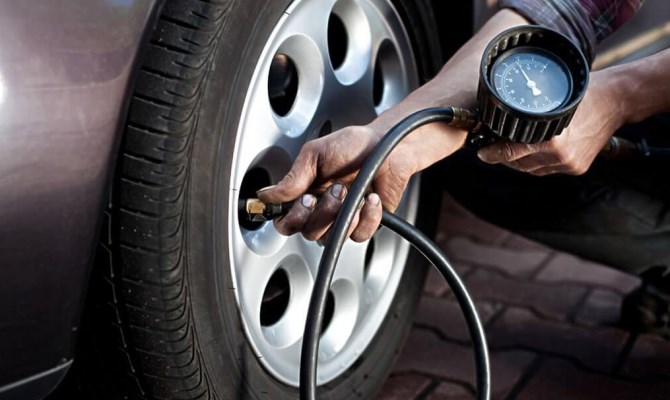
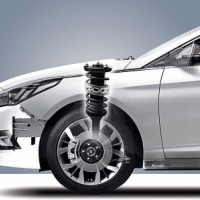
For measuring purposes, you can also use a relatively inexpensive mechanical pressure gauge equipped with a cylindrical spring. It is insensitive to external mechanical influences, has a long service life, but gives less accurate measurement results than pointer devices. If you need maximum accuracy, then it is best to use for performance control digital pressure gauges, they are very functional and easy to operate, but they are very expensive.
To determine the optimal pressure in the tires of the machine, you should refer to the recommendations of its manufacturer. For different brands The recommended values for this parameter vary, so always carefully read the instructions for your vehicle. If you read technical documentation once, you can look for a sticker on the driver's door pillar, under the glove box lid or on the gas tank flap, on it the automaker indicates important information for the car owner, including the optimal pressure gauge readings.
The pressure should be measured in all wheels of the car, and this should be done on cold rubber. When driving, the rubber heats up, and because of this, the results of the measurements taken may be inaccurate.
2 What can incorrect tire pressure lead to?
The condition of the tires should not be taken lightly and it is not recommended to control the condition of the wheels "by eye". You can't visually tell if there's a slight decrease or increase in pressure, and running a car with 0.5 bar less air in the tires can already cause rapid wear. Professionals recommend taking full measurements in all wheels at least once every 2 weeks.
Other adverse effects of driving with low tire pressure include:
Excessive air volume also negatively affects the car. Due to too hard rubber, the comfort of traveling in a car is significantly worsened, especially on bad roads, the controllability of the vehicle is reduced, and the likelihood of damage to expensive suspension parts increases.

Despite the simplicity of monitoring the condition of the wheels, many car owners either do not bother with such work at all, or do not take measurements often enough. If you don’t want to spend your time on periodic measurements, a tire pressure sensor or special indicator caps can help you. These caps change color depending on the pressure in the tire. Green color indicates normal pressure, and red indicates a decrease optimal performance more than 0.3 bar (1 bar is approximately equal to 1 atmosphere).
IT IS IMPORTANT TO KNOW!
Every motorist should have such a universal device for diagnosing his car. Now without an autoscanner just nowhere!
You can read, reset, analyze all sensors and configure the car's on-board computer yourself using a special scanner...
Such caps are programmed in advance, so you just have to choose these devices for your car brand. Completely trust automatic sensors should not be, but special color or sound signals will help you remember to monitor the condition of the tires.
3 Pressure control in the cold season
Not all motorists follow the recommendations of car manufacturers and maintain optimal tire pressure. In summer, a slight discrepancy between the actual pressure and the recommended one may have practically no effect on the behavior of the vehicle on the roads, but in winter everything is different. There are several important reasons why it is especially important to monitor the car as a whole in the cold season:
- Difficult, inconsistent weather conditions.
- Temperature changes.
- Bad roads - ice, puddles, drifts, etc.
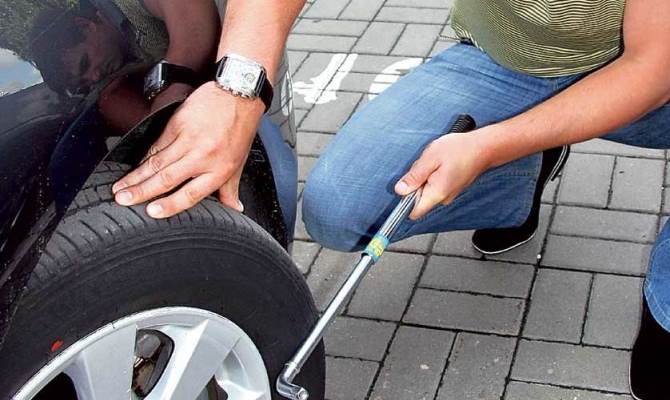
By maintaining the optimum pressure in the tires, you guarantee the vehicle maximum grip on winter road surfaces, which has a positive effect on vehicle handling and driving safety. Reduced air volume in tires winter road can lead to a significant increase in braking distance, tire spin and even tire rupture.
Tire pressure in winter time year should be higher than in summer by 0.1–0.2 atmospheres. But it is best to familiarize yourself with the manufacturer's recommendations in advance and strictly follow them.
4 Under what conditions can there be less air in the wheels?
Despite recommendations to maintain tire pressure recommended by the manufacturer, there is one reason for deliberately reducing this characteristic. A slightly reduced air volume has a positive effect on the vehicle's handling when driving on roads in conditions of heavy snowfall and skidding. Because of reduced pressure the area of \u200b\u200bcontact of rubber with the road increases, however, it must be remembered that a strong decrease in this characteristic can lead to disastrous results. A decrease in the indicator by no more than 15% relative to the recommended value is allowed. And immediately after the end of the snowfall or leaving on a normal road, the wheels will need to be pumped up.
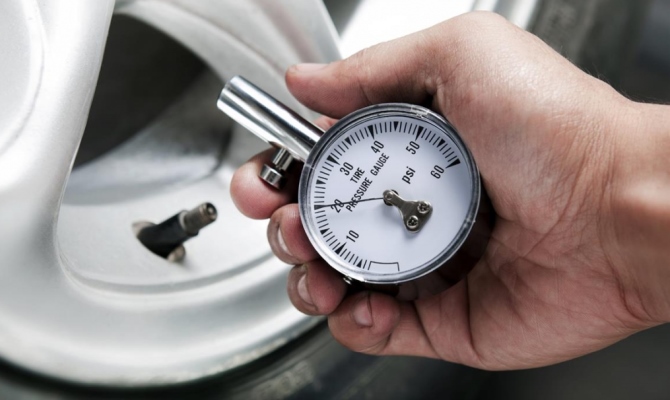
It is worth remembering that in winter the pressure in the wheels can spontaneously decrease, because of this, it is necessary to control the value more often. Usually the reason for this is the failure of the nipple, which is recommended to be changed every 3-4 months, but drivers rarely pay attention to this detail. It is because of him that the wheels are lowered in winter.
Another common cause of reduced air volume is a tubeless valve. It needs to be changed every six months, since when exposed to low temperatures, it loses its elasticity and begins to let air through. In addition, the pressure may decrease due to the composition of the air in the tires. When the air contains water vapor or oil, while the vehicle is moving, the wheels can be lowered. Using clean air for wheels can reduce pressure dependence on the environment by 30% or more.
5 Pressure in the wheels of cars of different brands and classes
Drivers of large cars are less likely to heed manufacturer's recommendations than car owners. They are usually more experienced and self-confident, and therefore they are used to relying on themselves and the recommendations of colleagues. You can often hear from experienced drivers that the amount of air in the wheels must be increased in direct proportion to the load on the vehicle.
This opinion has nothing to do with the truth. Modern standards not only do not recommend, but directly prohibit doing so. Regardless of the vehicle load and the number of passengers in it, the tire pressure must remain constant and in accordance with the manufacturer's recommendations. And drivers of buses and trucks should monitor the characteristics of tires at the same frequency as owners of passenger vehicles.
The table below shows approximate tire pressures. cars different classes and weights.
Maintaining the correct tire pressure is the direct responsibility of every car owner who cares about his own safety and his vehicle. To control this characteristic does not require much time, effort or effort. Money. All the necessary manipulations will take you only a few minutes, but they will help optimize fuel consumption, improve the controllability of the car, increase the comfort of travel, and save you from emergencies.
Do you still think that car diagnostics is difficult?
If you are reading these lines, then you have an interest in doing something yourself in the car and really save because you already know that:
- Service stations break a lot of money for simple computer diagnostics
- To find out the mistake you need to go to specialists
- Simple wrenches work in the services, but you can’t find a good specialist
And of course you are tired of throwing money down the drain, and it’s out of the question to ride around the service station all the time, then you need a simple ELM327 AUTO SCANNER that connects to any car and through a regular smartphone you will always find a problem, pay off the CHECK and save a lot! !!
We ourselves tested this scanner on different machines and he showed excellent results We now recommend it to EVERYONE! So that you do not fall for a Chinese fake, we publish here a link to the official Autoscanner website.
cool
In this article, we will tell you what tire pressure should be in your car so that your tires live as long as possible.
Many motorists know from their more experienced colleagues that the pressure in the tires of a car must be a specific value. This is necessary so that the tires do not wear out faster than expected. In addition, it will be harmful low pressure in tires and overpressure. Accordingly, for each car, you should find the optimal normal tire pressure. In this article we will tell you what the pressure in the wheels of a car should be so that yours.
How is tire pressure measured?
In the territory Russian Federation and CIS countries, tire pressure is measured in atmospheres, which in turn are indicated in kilograms per square centimeter - kg / cm2. As you know, 1 atmosphere equals 0.1 megapascals.
Often, our motorists come across plates with the recommended tire pressure of American cars, in which the pressure is indicated in PSI - pounds per square inch. This system pressure measurement is British. It is difficult to translate it into our system of measurement. Imagine the translation formula:
1 psi = 0.068 atm
or vice versa
1 atm = 14.706 psi
Also, tire pressure can be indicated in bar. This unit of pressure is easy to recalculate, since it is practically equal to the atmosphere. That is why the bar is also called the "technical atmosphere".
bar = atm * 0.980655
Information plates on the sidewall of cars often indicate the maximum allowable pressure in tires. At the same time, car owners should not confuse the maximum allowable pressure in car tires MAX Pressure with recommended tire pressure.
As we know, there are three types of tire pressure:
- overpressure,
- low pressure,
- normal pressure.
We must achieve the establishment of tire pressures close to normal pressure. We now describe the consequences for the case of low air pressure inside.
If the tire pressure is low, then we will wear out the sidewalls of the tire faster. In addition, it will increase:
– risk of punctures in the wheel;
- the risk of hernias will increase;
– the risk of damage to the light-alloy rim will increase.
When a car's tires are low in pressure, the car itself begins to "float" on the road. It will be dangerous to drive at high speeds. Since literally in a small turn the car will be worse controlled. It is by signs of "floating" along the road that drivers recognize a flat tire. As soon as the car is poorly controlled and you have to help the steering wheel quite often when driving in a straight line, this is the first sign that you may have a flat tire.
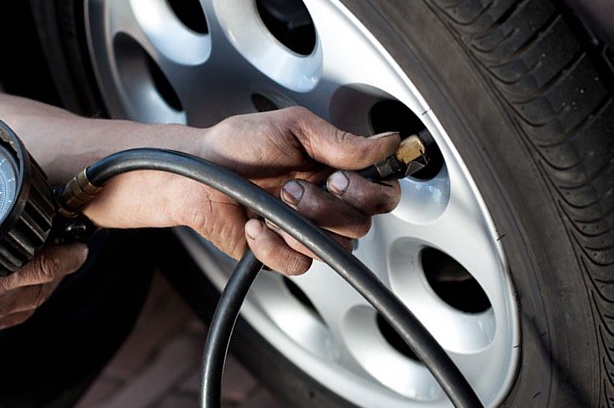
We must achieve the establishment of a tire pressure close to normal pressure.
If the car has tires with high pressure inside, then the tires will wear out the tread faster, especially its middle. With such tires, it is more difficult to control the car in corners and at low speeds, since the contact patch with asphalt will be the smallest. However, on the highway, when driving in a straight line, the car will be more stable. In addition, the stiffness of the suspension will increase. And on bumps, you will feel the bumps transmitted through the wheels and suspension to the car body.
Normal recommended tire pressure for specific model the vehicle is indicated by the automobile manufacturer on information plates, which are usually located in the driver's door area. The recommended tire pressure is affected by:
- the mass of a specific car model;
– front and rear track width;
– the ratio of the weight on each of the axles.
That is why the recommended tire pressure is not indicated on the tires themselves by the manufacturer, since the same tire can be used on different car models that will have different weights. If you did not find an information plate indicating the recommended tire pressure on the car, then you should look for information in the instruction manual for a specific car model.
For the convenience of converting from PSI to Atmospheres (atm), Bars (bar) and Kilopascals (kPa), we offer you a summary table of tire pressures:
| Pressure in psi | 20 | 21 | 22 | 23 | 24 | 25 | 26 | 27 | 28 | 29 | 30 | 31 | 32 | 33 | 34 | 35 | 36 | 37 | 38 | 39 |
| to kPa | 138 | 145 | 152 | 159 | 165 | 172 | 179 | 186 | 193 | 200 | 207 | 214 | 221 | 228 | 234 | 241 | 248 | 255 | 262 | 269 |
| to atm(bar) | 1.4 | 1.4 | 1.5 | 1.6 | 1.6 | 1.7 | 1.8 | 1.8 | 1.9 | 2.0 | 2.0 | 2.1 | 2.1 | 2.2 | 2.3 | 2.4 | 2.4 | 2.5 | 2.6 | 2.7 |
| Pressure in psi | 40 | 41 | 42 | 43 | 44 | 45 | 46 | 47 | 48 | 49 | 50 | 51 | 52 | 53 | 54 | 55 | 56 | 57 | 58 | 59 |
| to kPa | 276 | 283 | 290 | 296 | 303 | 310 | 317 | 324 | 331 | 338 | 345 | 352 | 358 | 365 | 372 | 379 | 386 | 393 | 400 | 407 |
| to atm(bar) | 2.7 | 2.8 | 2.9 | 2.9 | 3.0 | 3.0 | 3.1 | 3.2 | 3.3 | 3.3 | 3.4 | 3.5 | 3.5 | 3.6 | 3.7 | 3.7 | 3.8 | 3.9 | 3.9 | 4.0 |
Often, different pressures will be recommended for the front and rear wheels, as it will depend on the load on each of the axles of the machine. Many experienced motorists advise their friends who could not find an information plate with recommended tire pressure for a particular car model to pump 2.2 atmospheres into the tires on the front axle, and 2.0 atmospheres for the rear axle. In the case of a fully loaded car, pump 2.4 atmospheres into the wheels. Indeed, these are average recommended tire pressures for most passenger car models. However, in fact, you should not listen to these tips from experienced drivers. After all, the spread of the recommended pressure for different models cars are pretty big.
